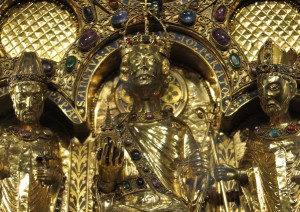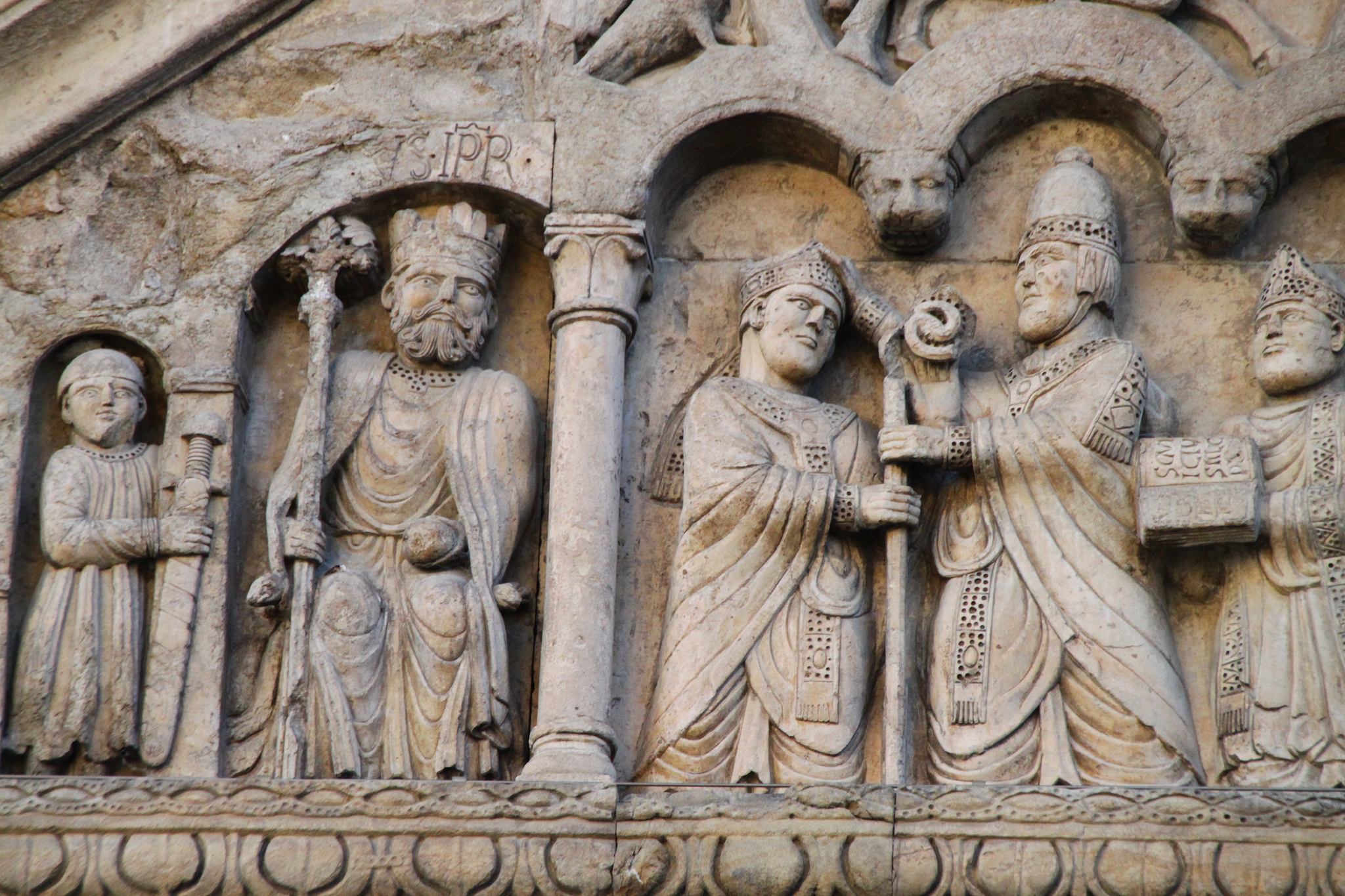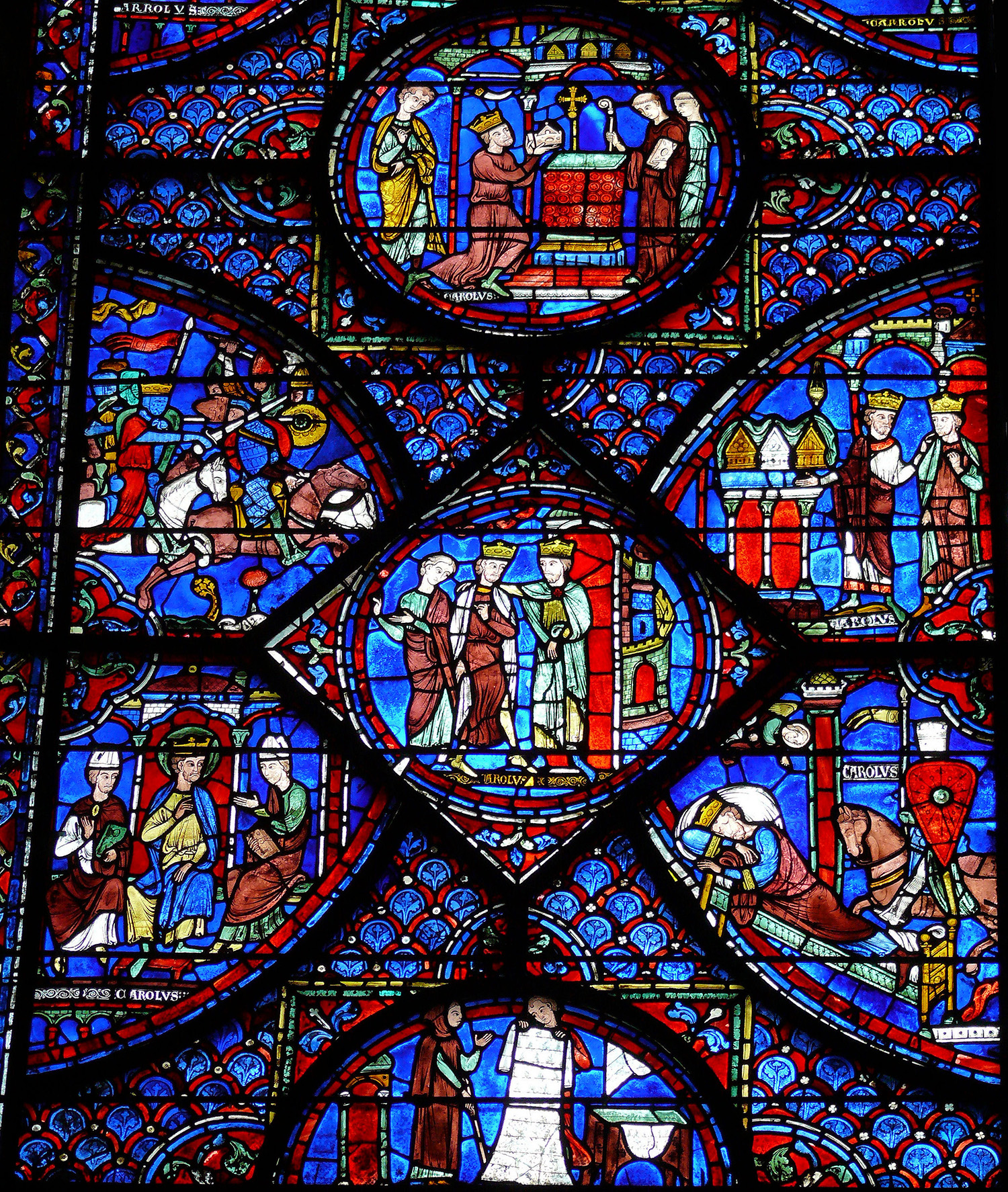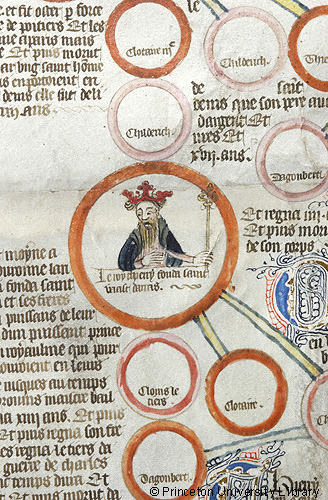




Today marks the feast day of Saint Charlemagne. The Frankish leader was canonized by the antipope Paschal III in 1165, some three-and-a-half centuries after his death on January 28, 814. Political motivations assuredly played a role in this act given the pontiff’s desire to curry favor with Charlemagne’s successor, Emperor Frederick Barbarossa. Yet it is well worth remembering that distinctly local commemorations of the emperor had already been established throughout the original footprint of the Carolingian empire.

Although Paschal III’s ordinances were officially revoked during the Third Lateran Council in 1179, Charlemagne remained a figure of veneration, particularly in the cathedral of Aachen, which houses an elaborate thirteenth-century shrine containing his relics. On Karlstag, the twelfth-century liturgical chant Urbs Aquensis, urbs regalis is performed within the cathedral in celebration of the emperor’s memory. With its vivid language, the sequence evokes Charlemagne’s accomplishments by describing him as a soldier of Christ, just ruler, converter of infidels, and an all-around rex mundi triumphator. Such descriptors complement posthumous medieval depictions of the emperor, which are amply represented in the Index’s catalogue. Portrayed variously as a ruler, warrior, patron, and saint in different media, these figures of Charlemagne underscore the diversity of guises and legends that developed after the historical emperor’s death.

Places of Power
The Index of Christian Art announces an exhibition of rare photographs of important monumental sculpture entitled Places of Power. On display will be a selection of photographs of significant places in major European cities, including two pre-1900 views of L’Arc de Triomphe and the façade of the Pavillon Sully wing of the Louvre Museum in Paris, a rare image of the piazza del duomo in Milan taken before 1896, twenty postcard views of Strasbourg Cathedral dating to the 1920s, and a large mounted study photograph of the twelfth-century Last Judgment scene on the tympanum of St. Foy at Conques, France, a key stop for pilgrims traveling to Santiago de Compostela in northern Spain.
The photographs will be on display through March as part of the Index’s rotating exhibition program.